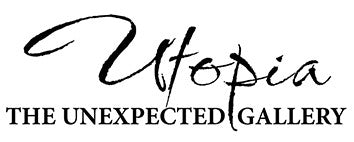News — commissions
Drawing Together: The Art of Working to Commission
Drawing to commission has a different dynamic, one where the poetry of creativity has a tension. The management of that is where Utopia excels, as exemplified in the last twelve months when Jac has been commissioned by both corporate companies and private clients to draw a range of subject matter.
We thought you might be interested in both the process and the results.
What happens when I commission a drawing at Utopia?
- CONSULTATION
The first step is to have an in-depth consultation with Jac on what your ideas are and how Utopia might fulfil them. We also discuss options for developing the idea and find out your budget and deadline – key parts of working productively together.
- SITE VISIT
Secondly, a site visit is booked. From this, basic research material is gleaned and then a quote is provided. Utopia does not charge for these initial meetings.
- CONTRACT
A simple contract is drawn stating: the brief, financial terms and schedule. On signed agreement and exchange of the contract, plus receipt of the non-returnable deposit, the work begins.
- RESEARCH
Jac will need to make some site visits to collect research material (sketches, photographs etc) but exactly how many are arranged, depends on the brief. The visits are always arranged with the client in advance and at times of mutual convenience. Many of the site visits are outside and therefore dependant on suitable weather conditions.
- SKETCH
It is usual for a preliminary sketch illustrating the composition to be forwarded to the client prior to a full drawing being created. This ensures that both parties are clear about the brief and that both are heading in the same direction. Any amendments are then made.
- DRAWING
At this stage the exciting part commences as the full drawing is developed. On completion a low-resolution version is emailed to client for feedback.
- CHANGES
Any little changes to the drawing are executed, the final version is agreed, then this stage is signed-off by the client.
- OTHER MATERIALS
If developments like framing and printing have been asked for, then it is at this stage in the process that they are managed.
- COMPLETION
On receipt of the drawing (and other materials) the client pays the balance and does a final sign-off to show the commission has finished.
This process enables both parties to clearly understand what is happening and when, so there is little chance for misunderstandings. Jac has spent twenty-five years as a professional artist working to commission, so she understands the process well and finds it rewarding developing new works from clients ideas.
Please get in touch if you have a concept you’d like to explore further.
Here are some commissions from clients in the last twelve months.



Tales of the Unexpected

Borrowing the title from Roald Dahl’s collection of amusing and twisted stories may seem a liberty, but at The Unexpected Gallery we find that visitors to the gallery do tell us such wonderful tales. It may be the unusual gallery atmosphere where unexpected discoveries are made – antique teapot lamps juxtaposed with bird skulls in test tubes or 1930s polished copper fire extinguisher lamps dressed with luxurious gold vellum lampshades - that generates interesting revelations.
People bring u s all manner of nostalgic mementos to bring back to life in dynamic ways. One client had tr
s all manner of nostalgic mementos to bring back to life in dynamic ways. One client had tr
easured his boyhood marble trophies into retirement and presented them in a bag one day to us. The outcome was a wall-based display where marble stripes were invisibly suspended in clear resin within a protective frame. The piece now hangs proudly above the client’s front door.

 Another day, a dusty box of 1950s Disney plastic Christmas tree lights appeared, the owner explaining that her father had made them in a factory and that she had fond memories of them from her childhood. She now wanted to remember them, and her father everyday, so could we design a light with them. The design needed to utilise the qualities of LEDs, so not to risk the brittle nature of the old plastic shades. The result was a giant lamp where the old shades formed a ‘fringe’ around the base of a reconstructed vintage standard lamp and shade.
Another day, a dusty box of 1950s Disney plastic Christmas tree lights appeared, the owner explaining that her father had made them in a factory and that she had fond memories of them from her childhood. She now wanted to remember them, and her father everyday, so could we design a light with them. The design needed to utilise the qualities of LEDs, so not to risk the brittle nature of the old plastic shades. The result was a giant lamp where the old shades formed a ‘fringe’ around the base of a reconstructed vintage standard lamp and shade.


And then there’s serendipity. A couple of weeks ago we were delighted to find an antique copper and brass bugle hiding in a dusty corner in an antiques centre. The next day a client visited the gallery and was admiring a table lamp we had just created from a 1880s clarinet – “we’re doing a bugle next” we said. With disbelief she exclaimed that her daughter was the bugle player for the Kings Troop and what a wonderful Christmas present that would be. Lucky girl.

